
In our modern world, stress has become as common as our morning coffee – and often just as addictive. While supplements provide excellent foundational support for managing stress (as we explored in Part 1), true stress relief comes from a holistic approach that nourishes your mind, body, and spirit. Beyond the scientific realm of adaptogens and magnesium lies a fascinating world of complementary practices that have supported human wellbeing for centuries. Today will talk about crystals for stress and anxiety, how relaxing and or laughing helps to reduce stress, and stress relief books.
From the ancient wisdom of crystal healing to the modern science of laughter therapy, these time-tested approaches offer unique pathways to peace and resilience. Whether you’re a sceptic curious about alternative methods or someone seeking to expand your stress-relief toolkit, this comprehensive guide will introduce you to gentle, accessible practices that can transform your daily experience. We’ll explore everything from the calming energy of crystals to the therapeutic power of a good book, helping you discover which approaches resonate with your unique needs and lifestyle. Get ready to move beyond quick fixes and build a sustainable, personalised approach to stress management that actually feels good to practice.
The Power of Mindful Practices in Stress Management
Mindful practices form the backbone of sustainable stress relief, offering immediate techniques you can use anywhere, anytime. Unlike supplements that work biochemically, mindful practices engage your conscious awareness to interrupt stress patterns before they overwhelm your system. These practices include breathwork, meditation, visualisation, and body awareness techniques that have been scientifically proven to reduce cortisol levels and activate your parasympathetic nervous system. The beauty of mindful practices lies in their accessibility – you don’t need special equipment, perfect conditions, or hours of time to experience their benefits.
Also Read- Mind-Body Connection Books & Practices: Expert Guide 2024
Crystals for Stress and Anxiety: Myth or Magic?
The use of crystals for healing and emotional support spans thousands of years across virtually every culture on Earth, suggesting something deeper than mere superstition at work. While modern science hasn’t definitively proven that crystals emit healing energies, emerging research in quantum physics and biofield science is beginning to explore how crystalline structures might interact with the human energy system.
What we do know is that crystals have measurable piezoelectric properties – they generate electrical charges under pressure – and that the human body operates through complex electrical systems. Whether crystals work through energy, psychology, or a combination of both, millions of people worldwide report genuine benefits from incorporating them into their wellness routines. The placebo effect itself is a powerful healing mechanism, and if holding a beautiful stone helps you feel calmer and more centred, that’s a valid and valuable therapeutic tool.
Best Crystals for Calming Energy
Selecting crystals for stress relief is both an art and a science, combining traditional knowledge with personal intuition. The most effective calming crystals are those that resonate with your nervous system’s need for stability and peace, often characterised by gentle, soothing colours and stable crystalline structures. These stones work by providing a focal point for meditation, a tactile comfort object during stressful moments, and energetic support that many users describe as subtly grounding or uplifting. The key to working with crystals effectively is approaching them with an open mind while maintaining realistic expectations about their role in your overall stress-management strategy.
Amethyst
Amethyst, with its stunning purple hues and calming vibrations, has been revered as a stone of spiritual protection and mental clarity for centuries. This powerful quartz variety contains trace amounts of iron and aluminium that create its distinctive colour, and many users report that simply holding amethyst helps quiet racing thoughts and promotes a sense of inner peace. Amethyst works particularly well for those who struggle with insomnia or anxiety-related sleep issues, as its gentle energy seems to support the transition from active consciousness to restful states. The stone’s natural beauty also makes it an excellent meditation focus, helping to anchor wandering minds during stressful periods.
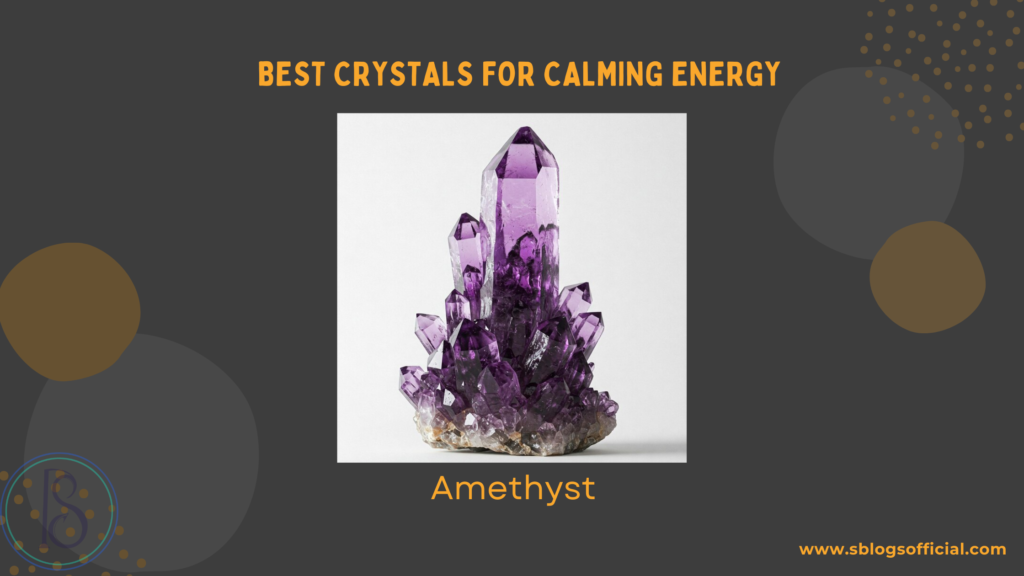
- Naturally promotes deep, restorative sleep patterns
- Helps quiet mental chatter and racing thoughts
- Supports spiritual practices and meditation focus
Lepidolite
Lepidolite stands out among healing stones due to its natural lithium content, the same mineral used in pharmaceutical mood stabilisers, making it a fascinating bridge between traditional crystal healing and modern medicine. This soft, lavender-coloured mica contains the highest concentration of lithium of any mineral, and many sensitive individuals report feeling notably calmer when holding or wearing lepidolite jewellery. The stone’s gentle, nurturing energy makes it particularly helpful for those dealing with anxiety, depression, or emotional overwhelm, providing a sense of stability during turbulent times. Its flaky, soft texture also makes it pleasant to hold during stress, offering both energetic and tactile comfort.

- Contains natural lithium for mood stabilisation
- Particularly effective for anxiety and panic responses
- Provides gentle, nurturing energy during emotional turbulence
Rose Quartz
Rose quartz, the stone of unconditional love, works on stress by addressing one of its root causes: the harsh inner critic that many of us carry. This soft pink crystal promotes self-compassion and emotional healing, helping to soothe the internal voices that create anxiety and self-doubt. Rose quartz energy feels particularly gentle and nurturing, making it an excellent choice for those whose stress stems from relationship issues, low self-esteem, or difficulty setting healthy boundaries. Many users find that keeping rose quartz nearby during difficult conversations or challenging situations helps them respond from a place of love rather than fear, fundamentally shifting their stress response patterns.
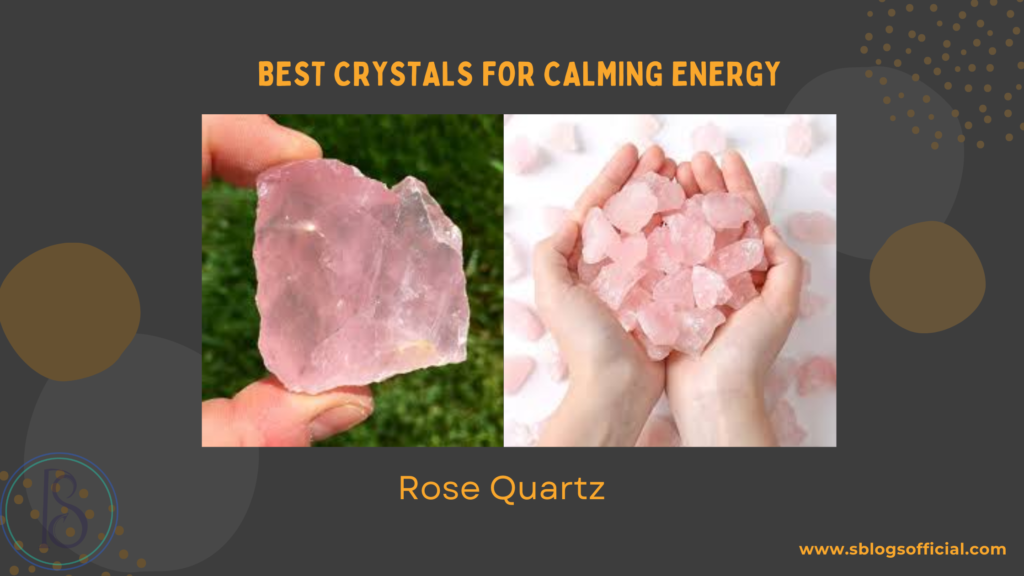
- Promotes self-love and emotional healing
- Helps establish healthy boundaries in relationships
- Soothes anxiety related to self-worth and acceptance
Many therapists and wellness practitioners now incorporate crystals into their work, recognising their value as mindfulness tools and comfort objects that can support traditional therapeutic interventions.
Also Read- How to strengthen mind body connection | Effective Techniques
How to Use Crystals for Stress and Anxiety Relief Routine
Integrating crystals into your daily routine doesn’t require elaborate rituals or deep spiritual knowledge; it simply requires intention and consistency.
- Carry in your pocket during anxious moments
- Meditate with one placed on your chest or forehead
- Keep them by your bedside to improve sleep
Explaining How Relaxing and or Laughing Helps to Reduce Stress
Laughter and relaxation represent two of the most accessible and immediately effective stress-relief tools available to us, yet they’re often the first things we abandon when life gets overwhelming. These natural stress-busters work through multiple physiological pathways, triggering cascades of beneficial biochemical changes that can shift your entire nervous system from fight-or-flight to rest-and-digest mode within minutes. The beauty of laughter and relaxation lies in their simplicity – they require no special equipment, training, or financial investment, yet their effects can be as powerful as any pharmaceutical intervention.
Key benefits of incorporating laughter and relaxation include:
- Immediate release of endorphins and mood-boosting neurotransmitters
- Rapid reduction in cortisol and other stress hormones
- Improved immune system function and inflammation reduction
- Enhanced social connection and relationship satisfaction
- Increased resilience and coping capacity for future stressors
- Better sleep quality and overall life satisfaction
The Science Behind Laughter and Stress Relief
Laughter triggers one of the most sophisticated healing responses in the human body, activating multiple systems simultaneously to create profound physiological and psychological benefits. When you laugh, your brain releases a cocktail of beneficial chemicals including endorphins, dopamine, and serotonin, while simultaneously reducing levels of cortisol, adrenaline, and other stress hormones.
This biochemical shift happens remarkably quickly – studies show that even anticipating laughter can begin to reduce stress hormones and boost immune function. The physical act of laughing also provides a form of internal massage, exercising your diaphragm, abdominal muscles, and cardiovascular system in ways that promote relaxation and release physical tension.
Research has consistently shown that laughter therapy can be as effective as traditional relaxation techniques for reducing anxiety and improving mood, with the added benefit of being inherently enjoyable and socially connecting.
How Relaxation Techniques Lower Cortisol
Relaxation techniques work by activating your parasympathetic nervous system, which serves as your body’s natural braking system for stress responses. When you engage in conscious relaxation practices, you’re essentially teaching your nervous system that it’s safe to shift out of high-alert mode and into a state of rest and restoration. This shift triggers a cascade of beneficial physiological changes that can be measured in real-time through decreased heart rate, lowered blood pressure, reduced muscle tension, and most importantly, decreased cortisol production.
- Deep breathing: Activates your parasympathetic system by stimulating the vagus nerve
- Progressive muscle relaxation: Reduces physical tension by consciously releasing held stress patterns
- Visualisation: Calms the mind by mentally escaping stress and creating positive neural pathways
Also Read- Positive Stress Management Technique | Boost Your Calmness
Stress Relief Books Worth Reading
Books offer a unique form of stress relief, providing both escape from immediate pressures and tools for long-term resilience building. Reading therapeutic literature engages your mind in ways that naturally calm the nervous system while simultaneously providing practical strategies you can implement in your daily life. The act of reading itself is meditative, requiring focused attention that naturally quiets racing thoughts and promotes a state of flow that many find deeply relaxing.
Top Stress Relief Books for Managing Stress, Anxiety, and Overwhelm
The Stress-Proof Brain by Melanie Greenberg
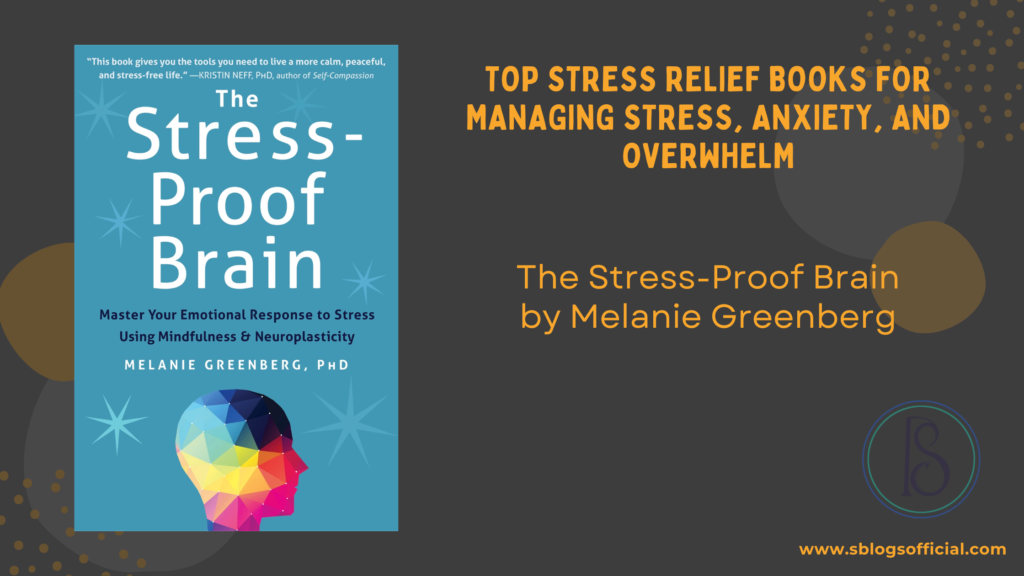
This groundbreaking book bridges the gap between neuroscience research and practical stress management, offering readers a deep understanding of how stress affects the brain and evidence-based strategies for building resilience. Dr. Greenberg, a clinical psychologist and neuroscience researcher, presents complex brain science in accessible language, helping readers understand why they react to stress the way they do and how to rewire their responses. The book is particularly valuable because it combines mindfulness techniques with cognitive behavioural strategies, offering multiple pathways to stress relief that can be customised to individual needs and preferences.
Burnout by Emily & Amelia Nagoski

Written specifically to address the unique stressors facing women in modern society, this book tackles the cultural and biological factors that contribute to chronic stress and burnout. The Nagoski sisters combine scientific research with practical advice, addressing everything from the stress cycle and emotional processing to cultural expectations and workplace dynamics. What makes this book particularly powerful is its validation of women’s experiences and its practical strategies for completing the stress cycle, managing perfectionism, and creating sustainable self-care practices that actually work in real life.
The Anxiety and Phobia Workbook by Edmund Bourne
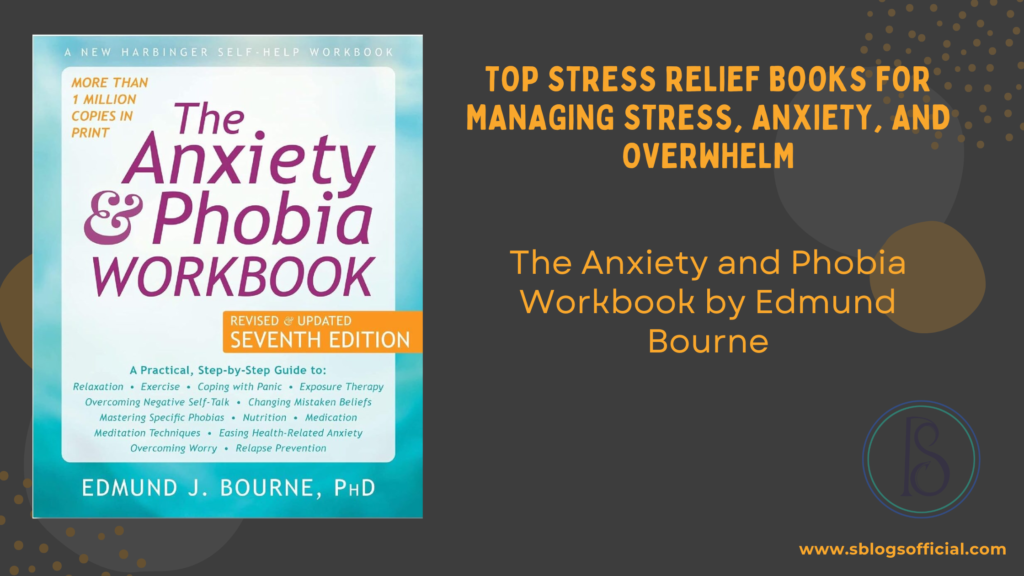
This comprehensive workbook has been helping people overcome anxiety and phobias for over two decades, offering a structured, step-by-step approach to understanding and managing anxiety disorders. Dr. Bourne combines multiple therapeutic approaches, including cognitive-behavioural therapy, relaxation techniques, and lifestyle modifications, to create a complete toolkit for anxiety management. The book’s strength lies in its practical exercises, worksheets, and self-assessment tools that allow readers to actively work through their anxiety rather than simply reading about it.
Full Catastrophe Living by Jon Kabat-Zinn
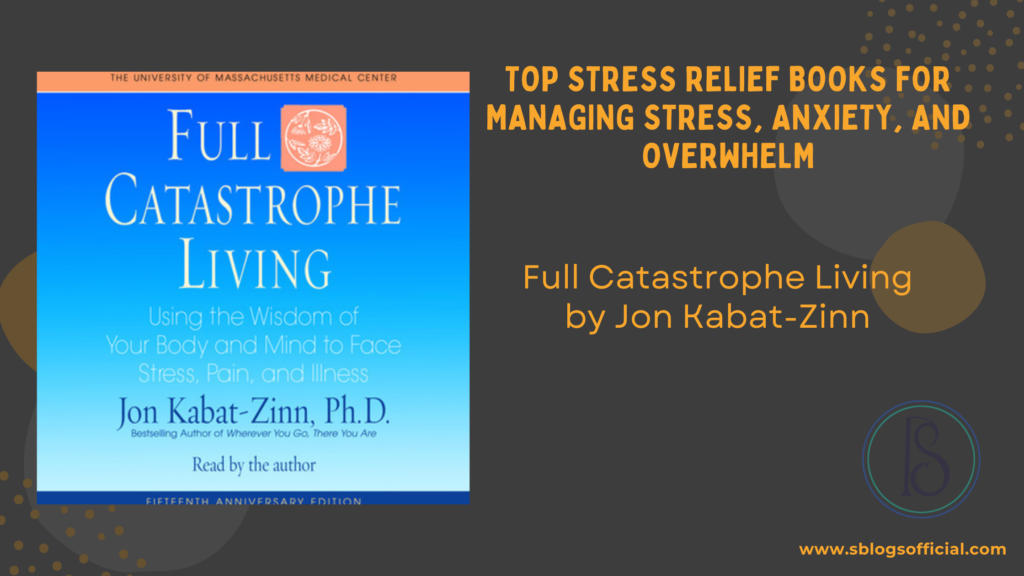
This seminal work introduced mindfulness-based stress reduction (MBSR) to mainstream healthcare and remains one of the most comprehensive guides to using mindfulness for stress, pain, and illness. Kabat-Zinn’s approach is both scientific and deeply compassionate, offering readers a way to transform their relationship with difficult experiences rather than simply trying to eliminate them. The book includes detailed instructions for meditation practices, body awareness exercises, and mindful daily living techniques that have been proven effective in clinical settings.
The Body Keeps the Score by Bessel van der Kolk

This groundbreaking book explores how trauma lives in the body and offers innovative approaches to healing that go beyond traditional talk therapy. Dr. van der Kolk’s research has revolutionised our understanding of trauma and stress, showing how experiences become stored in our nervous systems and affect our daily functioning. The book offers hope and practical strategies for healing, including body-based therapies, mindfulness practices, and creative approaches that help restore balance to overwhelmed nervous systems.
Atomic Habits by James Clear
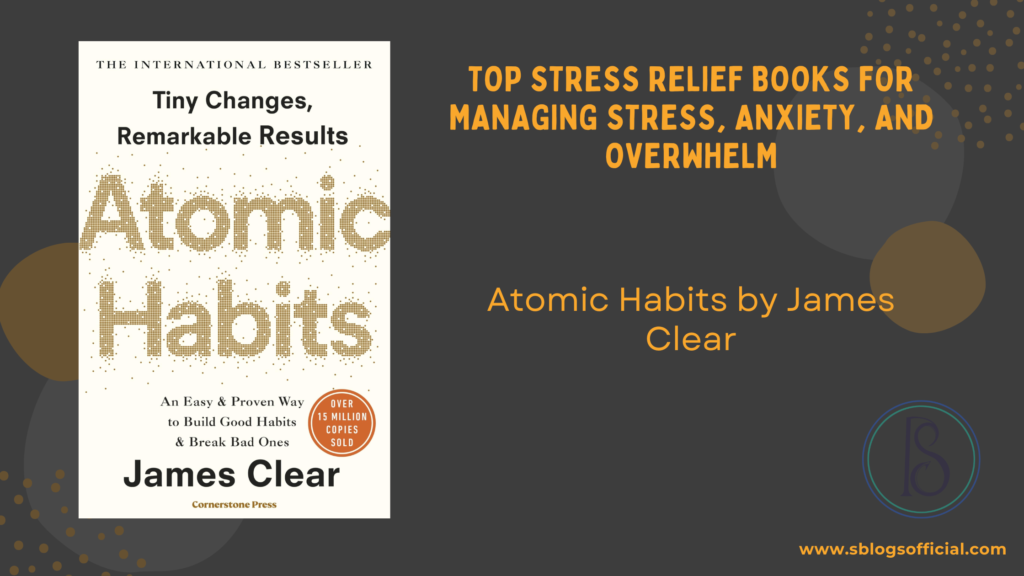
While not specifically about stress, this book offers invaluable insights into building sustainable routines and making positive changes that stick. For stress management, the ability to consistently implement healthy habits is crucial, and Clear’s approach makes behaviour change feel achievable rather than overwhelming. The book’s strategies for habit stacking, environmental design, and identity-based change can transform how you approach stress-relief practices, making them feel natural and automatic rather than forced.
What Makes a Book Truly Therapeutic?
Therapeutic books share certain qualities that distinguish them from simple self-help or academic texts – they create a sense of connection, understanding, and empowerment that can be genuinely healing. The most effective stress-relief books combine scientific credibility with emotional resonance, offering readers both the knowledge they need to understand their experiences and the tools they need to make positive changes. They validate readers’ struggles while maintaining hope for improvement, creating a balance between acknowledging difficulty and inspiring action.
- Offers actionable strategies that readers can implement immediately
- Encourages self-reflection and deeper understanding of personal patterns
- Helps readers feel understood and less alone in their struggles
Common Mistakes That Sabotage Stress Relief
Even with the best intentions, it’s easy to fall into patterns that ultimately increase rather than decrease stress levels. These self-sabotaging behaviours often provide short-term relief or pleasure while creating longer-term problems, making them particularly challenging to recognise and change.
- Over-caffeinating: Creates artificial energy that often crashes, leaving you more anxious
- Skipping meals: Causes blood sugar instability that mimics and worsens anxiety symptoms
- Doom-scrolling: Floods your nervous system with negative information and keeps you in fight-or-flight mode
- Skipping sleep in the name of productivity: Undermines your body’s natural stress recovery systems
Also read- Alternative Medicine for Pain & ADHD | Natural Solutions
Unhealthy Habits Masquerading as “Self-Care”
Some of the most insidious stress-sabotaging behaviours are those that masquerade as self-care or stress relief, making them particularly difficult to recognise and address. These activities might provide temporary pleasure or distraction, but they often leave you feeling worse than before and can actually increase your stress levels over time.
- Binge-watching all weekend: Provides temporary escape but often leads to feelings of wasted time and increased anxiety
- Emotional shopping: Offers momentary pleasure but can create financial stress and clutter-related anxiety
- Nightcap alcohol, thinking it helps you sleep: Initially sedating but ultimately disrupts sleep quality and increases anxiety
These habits can worsen stress in the long run by creating additional problems, disrupting healthy routines, or providing only temporary relief that masks underlying issues without addressing them.
Also Read- Holistic Health & Healing | A Complete Guide to Natural Wellness
Final Thoughts
There’s no “magic pill” to eliminate stress completely, but there are numerous powerful tools and approaches that can help you manage it holistically and effectively. Whether it’s a carefully chosen supplement for stress support, a simple stress ball for immediate tension relief, the calming presence of crystals for mindful moments, or the therapeutic joy of heartfelt laughter, you have access to a rich variety of resources for building resilience and finding peace in daily life.
The journey to effective stress management isn’t about perfection or finding the one perfect solution – it’s about experimentation, self-compassion, and gradually building a personalised toolkit that evolves with your changing needs. What works for others might not work for you, and what works for you today might need adjustment tomorrow. That’s not failure; that’s wisdom in action.
Start with one tool that genuinely appeals to you. Add what feels good and supportive. Leave behind what doesn’t serve you, without judgment or guilt. Remember that taking care of your mental health isn’t selfish – it’s one of the most important investments you can make, not just for yourself but for everyone whose life you touch.
Your Calmer, More Balanced Life Is Waiting, And It Starts with A Single Conscious Choice to Prioritise Your Wellbeing.
Your stress-relief journey is uniquely yours, and every small step toward better self-care is meaningful and valuable. Trust yourself to know what you need, be patient with the process, and celebrate the small victories along the way.
Join our wellness community of readers, expert tips, and evidence-based strategies for living with less stress and more joy. Subscribe to our blog for more informative content.
Sources
- Do Crystals Help With Anxiety? Myths & Scientific Facts
- indianjournals.com/ijor.aspx?target=ijor:ajner&volume=9&issue=3&article=035
- The Instinct to Heal: Curing Depression, Anxiety and Stress Without Drugs and Without Talk Therapy by David Servan-Schreiber | Goodreads
- The Complete Guide to Stress Management – Chandra Patel – Google Books
